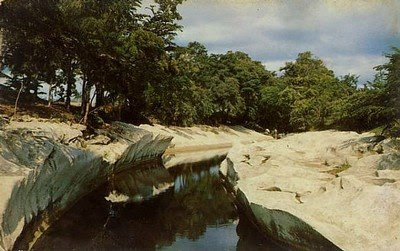 The Provincial Library Julio Antonio Mella is located in historical downtown, Camaguey city, across from beautiful Ignacio Agramonte Park . It was founded o
The Provincial Library Julio Antonio Mella is located in historical downtown, Camaguey city, across from beautiful Ignacio Agramonte Park . It was founded on June 1, 1963 and it is attended by a technically trained library staff who offers dynamic and efficient services. The Library has more 230000 volumes in stock, 86000 library users per year, and provides 146000 loans and other services –as a result of its wide and systematic activities of extension work and reading promotion, not only in the library itself, but also in the community. Nowadays, it is compiling local bibliographies and developing bibliotecological researches. It functions as both the Provincial Library and as the head of the provincial public libraries system, which comprises 30 libraries located in twelve municipalities and rural areas.
MISSION
Library's mission is directed towards the conservation, protection and dissemination of book collection and the promotion of reading, too by means of different actions and activities.
LENDINDG DEPARTMENT
It is composed of the Registration Department and the rooms dealing with general information, rare books, general literature, literature for children, literature for the young, visuals arts, music, and extension work. Each room keep very valuables collections according to its thematic outline and readers' interest.
PRINCIPAL SERVICES
Book lending, local lending of serials and audiovisuals materials, reference works (by phone and mail); services of bibliographical search, vertical file, cassette recording, musical auditions, concerts, library exhibitions, and other interesting activities.
 SELECTION, ACQUISITION AND TECHNICAL PROCESSING DEPARTMENT
SELECTION, ACQUISITION AND TECHNICAL PROCESSING DEPARTMENT
It has the responsibility of selecting, acquiring and processing library materials which the Institution obtains through different means. Besides, there are others important areas: Conservation and Computers. The WEB page is update. It is working on the Iberoamerican Digital Library Project.
SPECIAL AREAS
Minerva Book Club. The Public Library founded it five years ago to provide more books to readers. This collection comprises by new books from Cuban and foreign writers, or recently acquired by the National or provincial Libraries.
BLINDS AND VISUALLY IMPAIRED PEOPLE DEPARTMENT
It has a collection of books and magazines in Braille and offers “talking book”, rehabilitation, and teaching services for blinds and visually impaired; as well as home reading and extension work. This Area was founded in 1983.
OUR ACTIVITIES
Our cultural and reading promotion activities have gained real reputation due to the librarians' commitment and dedication. These activities are supported by a close link between the Public Library and different cultural institution.
• Wednesday's Concert. Second Wednesday at 3:00 pm.
• Young Performers. Third Wednesday at 4:00 pm.
- Camagueyana Conversation Last Monday at 5:00 pm.
• Movie Club Glauber Rocha. Third Thursday at 8:00 pm.
• Literature and much more… Last Friday at 10:00 am.
• Literary Saturday for children. Second Saturday at 10:00 am.
FOR CHILDREN AND YOUNG
The Children's and Young's Rooms have lovely developed several activities for reading promotion such as reading teams and workshop concerning Braille system, theater, painting, readers, story telling, literature, contest and games. Besides, these rooms have been awarded the International Prize Chamán and the National Prize Cuentería for yours systematic work in story telling for children.
LIBRARY AND THE COMMUNITY
It is a long-range project which serves people's needs in Camaguey city and its sorroundings, but it specially involves the assistance to disadvantaged persons. The Library offers services to people in health institutions, prisons, and also to the handicapped. Children Room carries out a weekly biblioterapy program , and other activities which require our spiritual and human support.
ANNUAL EVENTS
• Camagueyanos Writers Meeting, February
• Braille Workshop Reading , April.
• Scientific Workshop Bibliotecological, June.
• Special Areas Meeting, June.
• Children's Workshop National Story Telling, November.
DESK SCHEDULE
Monday to Friday: 8:00am.- 9:00 pm.
Saturday: 8:00am.-4:00 pm.
Sunday: 9:00am.- 1:00pm.
 Camagüey, 20 Sep. The information that has just published the National Office of Statistical, that Camagüey in the first semester is not only the county of more tourist permanency in Cuba full with joy to those that work in this sector, but to all the inhabitants of this center oriental region.
Camagüey, 20 Sep. The information that has just published the National Office of Statistical, that Camagüey in the first semester is not only the county of more tourist permanency in Cuba full with joy to those that work in this sector, but to all the inhabitants of this center oriental region.





















